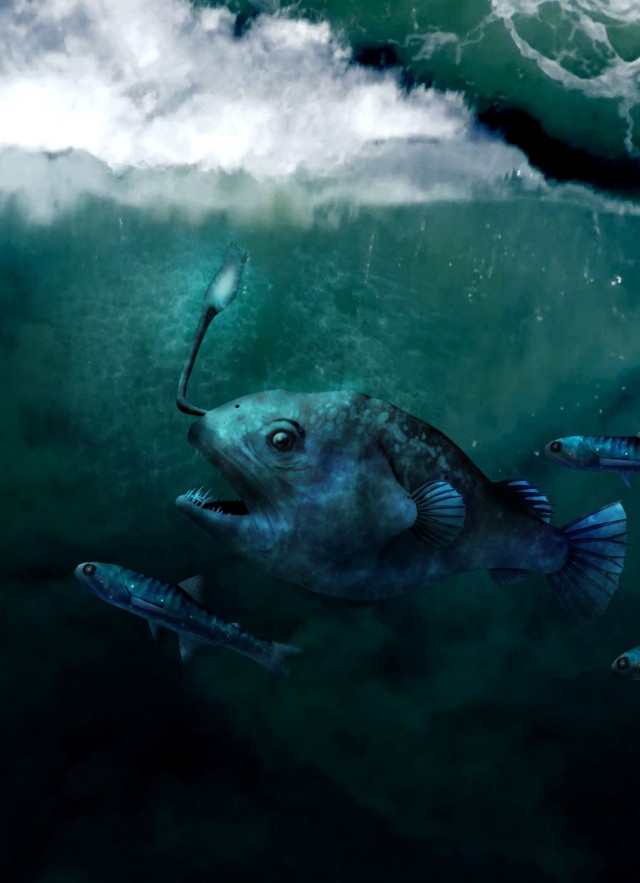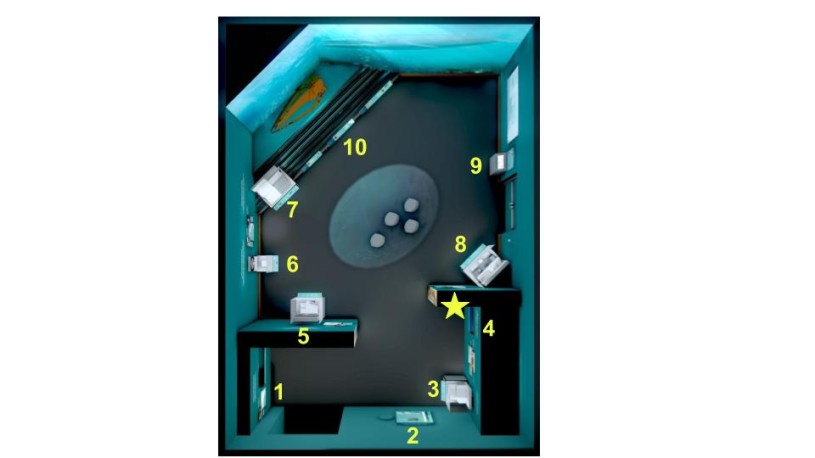Teachable Moments: Los Angeles Underwater
A Teacher Guide to help guide your students' experience in our newest temporary exhibit: "L.A. Underwater: The Prehistoric Sea Beneath Us"

Overview
Before it was the vibrant city we know, Los Angeles was underwater for over 90 million years. Explore the underwater realm of ancient Los Angeles when much of the L.A. area was submerged beneath the waves of the prehistoric Pacific Ocean.
Location
Los Angeles Underwater: The Prehistoric Sea Beneath Us Exhibit, Ground Level
Exhibit Vocabulary:
- Asphalt
- Climate Change
- Diatom
- Extant
- Extinct
- Evolve
- Fossil
- Fossil Fuel
- Habitat
- Permineralize
- Plankton
- Pseudofossil
- Tectonic Shift
- Tectonic Plates
Section 1 | YOU MAKE A DISCOVERY
Highlight Pieces: Coursen’s Strange Seal, Atopotarus courseni
What would your first step be if you discovered this fossil in your backyard? What would you do? Who would you call?
Extension: What do you notice about the Coursen's Seal that tells you this is a special discovery?
Section 2 | TIMESCALE: WAS LOS ANGELES ALWAYS ABOVE SEA LEVEL?
Highlight Piece: Infographic, L.A.’s Changing Coastline
Ask your students to consider how a region can become submerged by the ocean?
Extension: Think about what the Los Angeles landscape looks like today, what kind of physical or geologic processes might result in drastic changes in the environment?
Section 3 | WHAT ARE FOSSILS?
Ask your students to consider: What is a fossil? Discuss with your students the different types of materials that can fossilize.
Extension: Have your students discuss the process of fossilization. How do fossils form? What does it mean for something to permineralize?
Section 4 | WHY DO WE FIND FOSSILS OF SEA LIFE ON LAND?
What do you notice about this ancient ammonoid that makes scientists think it’s related to the squid and octopuses we see in our oceans today?
Extension: How might scientists use fossils to make connections to extant or living organisms?
Section 5 | FOSSILS TEACH US ABOUT THE OCEAN
Ask your students to think back to the changing coastline of Los Angeles (Section 2) and recall how geologic processes like climate change and the shifting of tectonic plates can change environments over time. What fossil clues might scientists look to determine what major changes may have happened in an area long ago?
Section 6 | OUR PREHISTORIC OCEAN LEFT A LEGACY OF FOSSIL FUELS
Your students might have seen asphalt before, perhaps washed up at the beach or at the La Brea Tar Pits. See if you and your students can spot some of these active oil wells on your way back to school today!
Section 7 | THE LIFE IN L.A.’s OCEAN HAS CHANGED OVER TIME
Ask your students to share some of their observations about the specimens on display from this time period, and reflect on what life might have been like for these animals.
Extension: Have your students discuss what may have caused some of these animals to go extinct and why some are extant or still alive today.
Section 8 | L.A.’s PREHISTORIC OCEAN HAD MANY HABITATS
What fossil evidence might tell us that there were different habitats in LA's Miocene sea?
Extension: Ask your students to consider these animal's adaptations. What might they tell you about the environment that these animals lived in?
Section 9 | FOSSILS OF SEA LIFE ARE FOUND ACROSS LOS ANGELES
Highlight Piece: Interactive Map
Find the nearest excavation site to your neighborhood - what might that tell you about the fossils you might find in your neighborhood? fossilmap.nhm.org
Section 10 | LINCOLN HEIGHTS WHALE
Highlight Piece: Lincoln Heights Whale, Mixocetus elysius
“I have visited the museum on many occasions and I knew I had something,” - F.W. Maley, local plumber who discovered the fossil whale skull
Remind your students that anyone can make a discovery! Read about fossil discoveries made by local Angelenos and check out Nhmlac.org/your-fossil-discovery to learn if you’ve found a fossil.*
*Star on map
Bonus Section | SWIMMING SHADOW WALL
Invite your students to view the swimming shadow wall. What do they notice? Explore any new questions that have arisen for your students after diving into L.A.’s Miocene sea.
